
Scholarship link building is one of those techniques which no longer works as well as it used to.
With that said, we're going to run you through the history of scholarship links, and how you can still run a successful scholarship link building campaign.
In this article, we will discuss:
💡 What a scholarship link is.
💡 The history behind scholarship links.
💡 The pros and cons of including scholarship links in your backlink profile.
💡 How to run a successful scholarship link building campaign.
Key Points
A scholarship link is a backlink that educational institutions include on their websites to promote your scholarship or bursary.
Although they were once a relevant link building strategy, scholarship links should now only form a small part of your backlink profile.
If you are going to use scholarship link building in your strategy, only include backlinks that are relevant to your niche.
What Is Scholarship Link Building?
Scholarship link building involves launching a scholarship or bursary for students and creating a page (or even an entire website) that promotes the scholarship.
You then approach schools, universities, and other relevant institutions to have them include a link to your scholarship page or website on their site.
In doing this, you receive a collection of .edu links that are usually considered trustworthy by search engines.
Here are two examples of university scholarship pages that link to various scholarships and bursary opportunities:
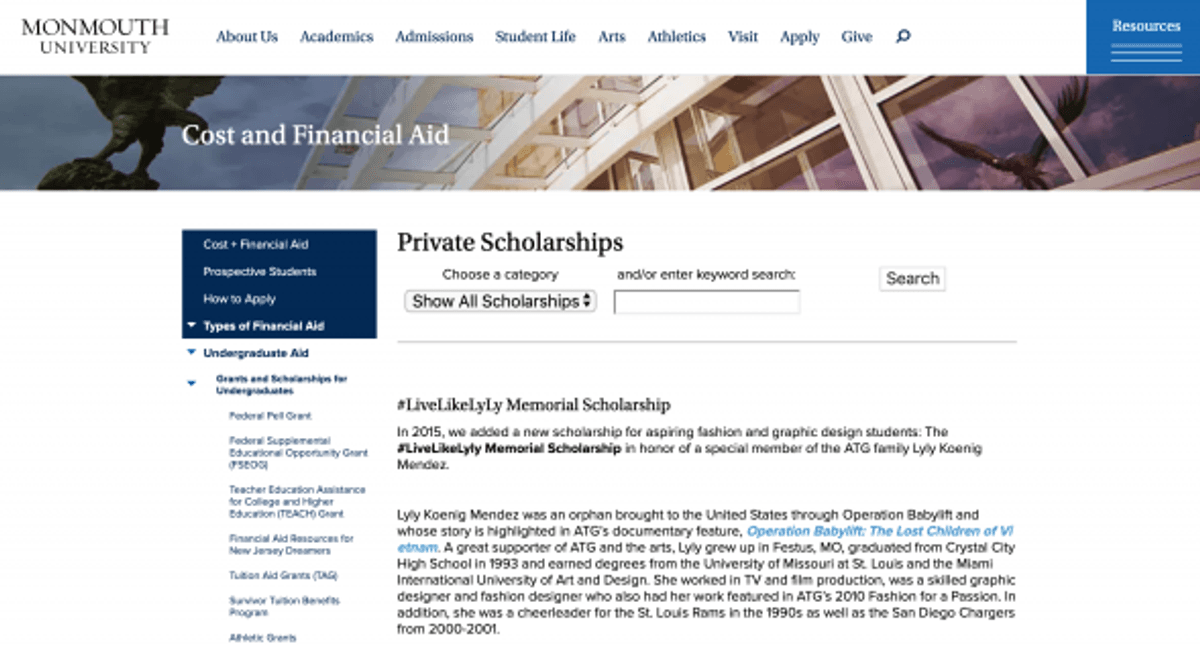
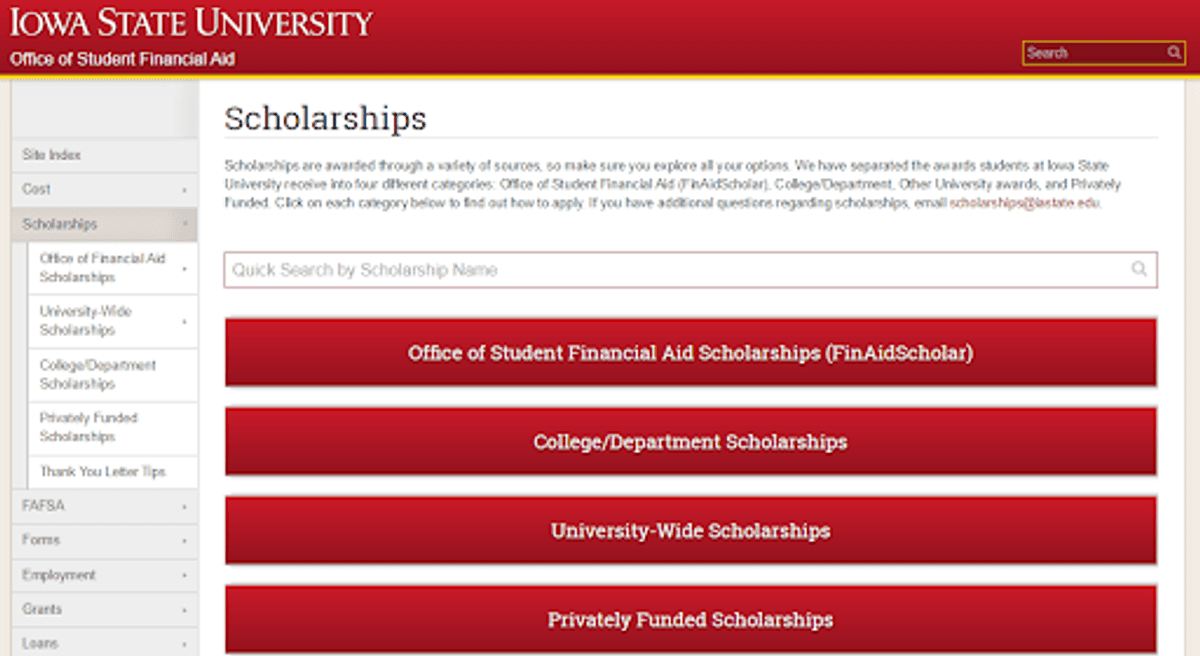
Is it worth it?
Google views websites for schools, colleges, and universities as some of the most authoritative and respected websites in the world. Associating yourself with websites that Google favors is certainly a good idea.
On the other hand, your business is essentially paying for the scholarship link in exchange for its placement on another website.
So, how is this any better than purchasing links—something which is against Google’s guidelines?
The educational institution isn’t necessarily saying that your website is a credible source—they’re only adding your link to assist students who may need financial aid.
Is it a paid link?
It’s fair to say that this strategy is a blatant exchange of money for links, and this link building method could land you in hot water with Google.
Over the years, Google has evaluated backlinks that are easy to generate—such as paid links—and has categorized many of them as low-quality and spam links, which can result in a manual link penalty against your website.
The possibility of a manual link penalty
Also called a Google penalty, a manual link penalty can significantly and negatively affect your search results. Google’s Spam Team invokes these penalties when they detect spammy or manipulative links on your website.
What Are Manipulative Links? 👈
These links manipulate search engines to direct traffic to your website and, as a result, boost your Domain Authority (DA) and your PageRank (PR). These links can include toxic and unnatural links.
As a link builder, you’d want to avoid these types of backlinks and do everything in your power to prevent a Google penalty.
The History Behind Scholarship Link Building
Around 2015, scholarship link building started to become a powerful SEO tactic, with scholarship campaigns seeing a return on investment (ROI) of up to 10%, for example. Some of these campaigns earned up to 100 backlinks for a single scholarship.
However, as the popularity of this tactic began to grow, companies started to take advantage of this link building strategy.
They overused and abused scholarship link building in order to gain as many backlinks as possible.
Because these businesses were doing a sloppy job, scholarship link building popped up on Google’s radar.
Google started penalizing websites for scholarship backlinks, particularly if they were used in a spammy way.
Do Scholarship Links Still Work?
While our argument is that scholarship link building is an outdated practice, many SEO agencies still offer it as a core strategy.
Are the results mentioned above still possible? That’s debatable.
Some SEO agencies have reported that they’re still seeing up to 6% ROI on this type of link building.
A noteworthy risk
So, while you may still receive backlinks from a scholarship link building campaign, and this may still work, you’re putting your website at risk by including them in your strategy.
It’s also worth noting that educational institutions are becoming increasingly aware of this tactic and the likelihood of a reputable school accepting your backlink is marginal.
So, while your intentions may be good, there are other companies that have abused this link building approach in the past, which is why Google penalties are now imposed for these types of links.
How Google treats scholarship links
When you have an abnormal amount of scholarship links in your backlink portfolio, Google flags these as unnatural links and starts an investigation.
A large number of scholarship links in your portfolio can indicate to Google that you’re running a link building scheme, which could result in the backlinks being ignored or receiving a penalty.
Should You Be Building Scholarship Links?
If you are going to make this tactic part of your link building strategy, our advice is to do so with caution.
Scholarship links should only form a small part of your backlink portfolio if you want to remain on Google’s good side.
Keep it relevant
If you must use scholarship links, keep in mind that they need to be relevant to your niche.
For example, if you are a financial institution, the scholarship you offer to students should only be granted to those studying finance.
Here’s an example of a business called Six Star Pro Nutrition offering a scholarship to students who live an active lifestyle:
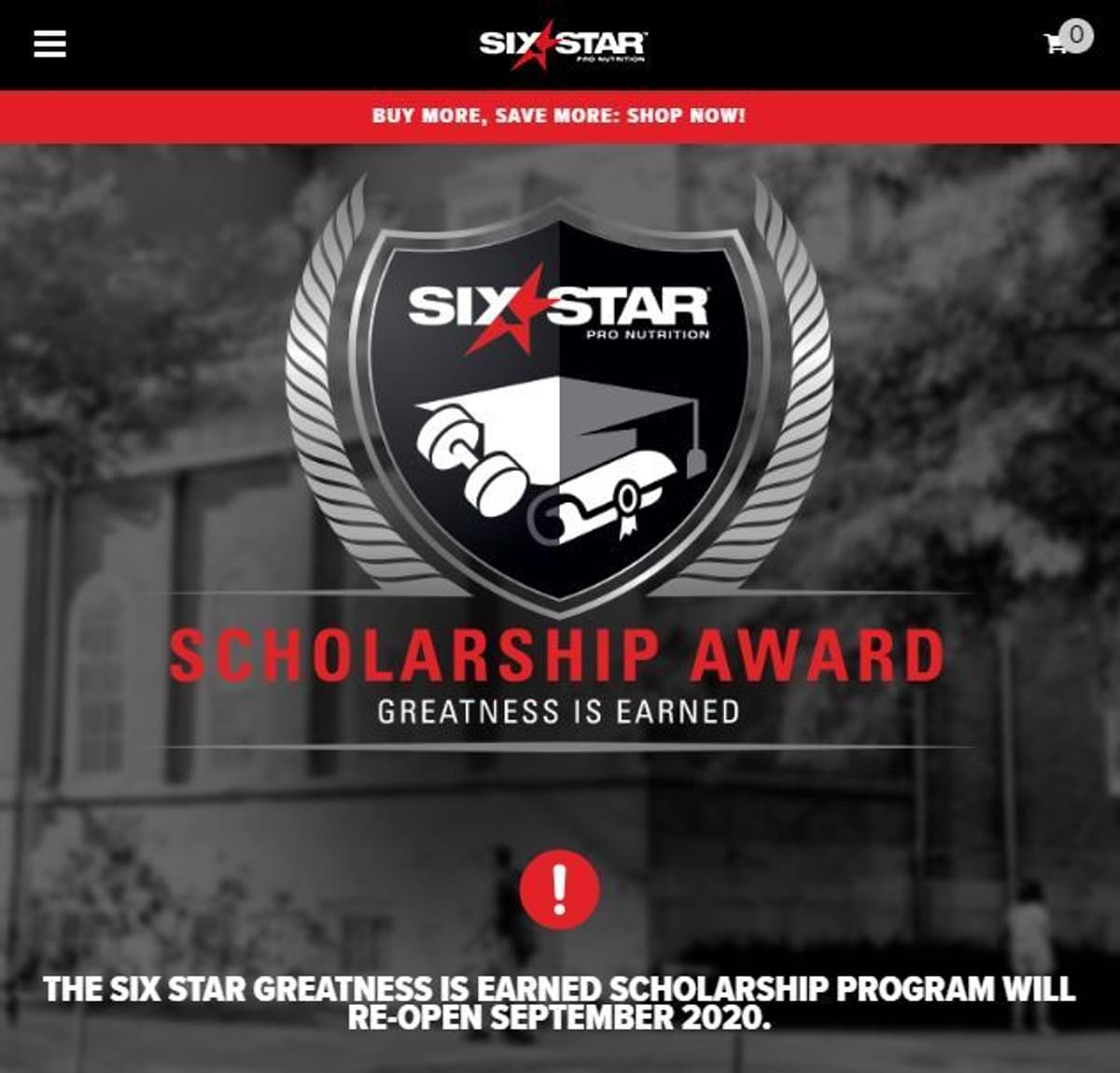
Here is an example of a law firm offering a scholarship to law students in higher learning institutions:
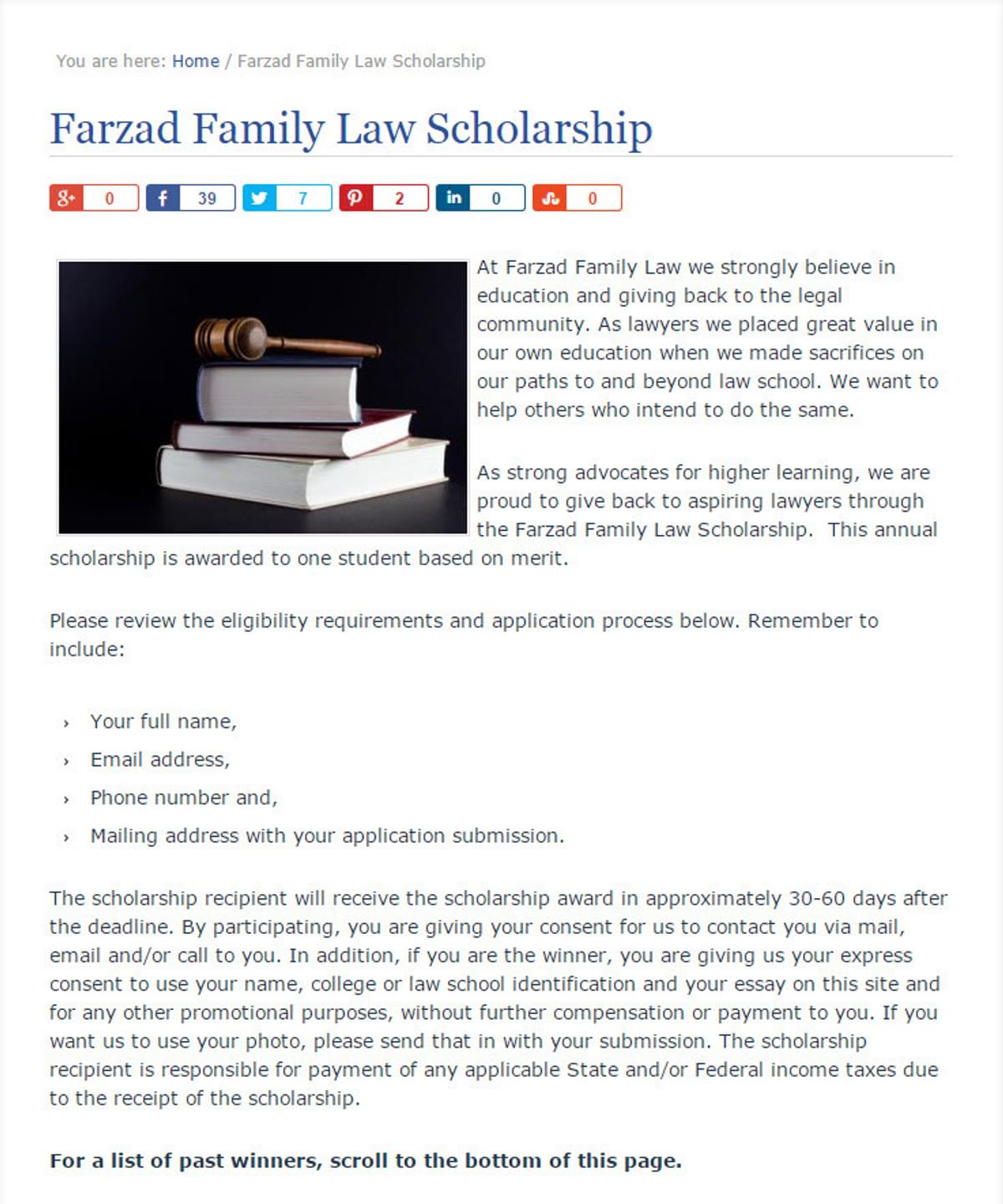
This is your best option versus offering a broad scholarship that any student can apply for.
Start on the right foot
It’s important that your scholarship link building tactic starts from the right place.
Your main objective should be to assist a student in need, rather than simply getting visits to your website.
If you start your scholarship link building strategy from this perspective, you’ll be doing it for the right reason—to help others—rather than directing traffic to your website.
Backlinks are less likely to be penalized when they are relevant and when they provide value to the user.
If you ensure your scholarship links follow these guidelines, you may win some traffic to your website.
The Pros and Cons of Scholarship Link Building
In order for you to make an informed decision about whether you’re going to engage in scholarship link building, it would be useful to know what both sides of the coin look like.
Here are some pros and cons you should consider before embarking on a scholarship link building campaign.
Pro: Free and high-quality content for your website

Perhaps one of the biggest perks of using scholarship link building is that you will have a way to generate high-quality content for your website.
The better the quality of your website content, the more successful your link building efforts will be.
Most scholarships require students to submit industry-relevant essays as part of their application. This will help you determine to whom you should award the scholarship and give you plenty of fresh content to publish on your website.
You can publish these essays on your scholarship website as a form of high-quality content.
Giving Google fresh, high-quality content to crawl enhances your SEO efforts.
Pro: Improve your local SEO
Setting up a scholarship will improve your local SEO. This is because educational institutions that agree to place your link on their website will more than likely be local.
So, unless you’re offering your scholarship or bursary on an international scale, you’ll be receiving .edu links in the same region as your business.
This increases your search ranking for local results. And, if having local traffic driven to your website is important to the success of your business and your revenue, you’ve got an excellent chance to boost your brand.
The scholarship you’re offering should be focused on improving your local community, as mentioned above. If this is your intention, schools in your area will be more likely to accept your scholarship link request.
Con: It requires a significant investment
The first step in your scholarship link building campaign is to actually create your scholarship. This means pouring a chunk of money into a scholarship or bursary that you will be offering for students.
Considering the ROI of this link building strategy has significantly decreased over the past few years and— especially since Google started imposing penalties against these types of links—it may not be worth the investment.
If 30 .edu links pointing to your website could make you more money than what you’ve invested into your scholarship fund, then sure, go ahead.
However, you’ll likely need a large number of backlinks to make this worthwhile, which may not be realistic. This results in a situation where you’ve promised to provide funding, but you’re not making any form of ROI.
Con: It can be a costly process

Other than shelling out for a scholarship fund, your business will also need to consider the other elements of developing a scholarship link building campaign.
You’ll need to pay for the development of the website or web page where you host the scholarship content. And you’ll need to pay someone to write optimized content for the page.
Furthermore, you’ll need to pay someone to conduct your outreach campaign, which involves contacting educational institutions and asking them to place your link on their website. This is something that takes quite some time to do, so you’ll be paying this person over a couple of months at the very least.
Lastly, you’ll need to pay someone to review and vet scholarship applications. You may also need to form a board or committee to consider applicants and choose who to award the scholarship.
Con: Your backlinks may be ignored entirely
So, you’ve now spent money on creating your scholarship, developing your website, and employing staff. But what happens if, after all this money and effort, Google simply ignores your scholarship links entirely?
Many SEO agencies have the misconception that links from .edu domains would be more valuable than others.
However, Google’s very own Webmaster Trends Analyst, John Mueller, confirmed that Google now tends to ignore many of these links.
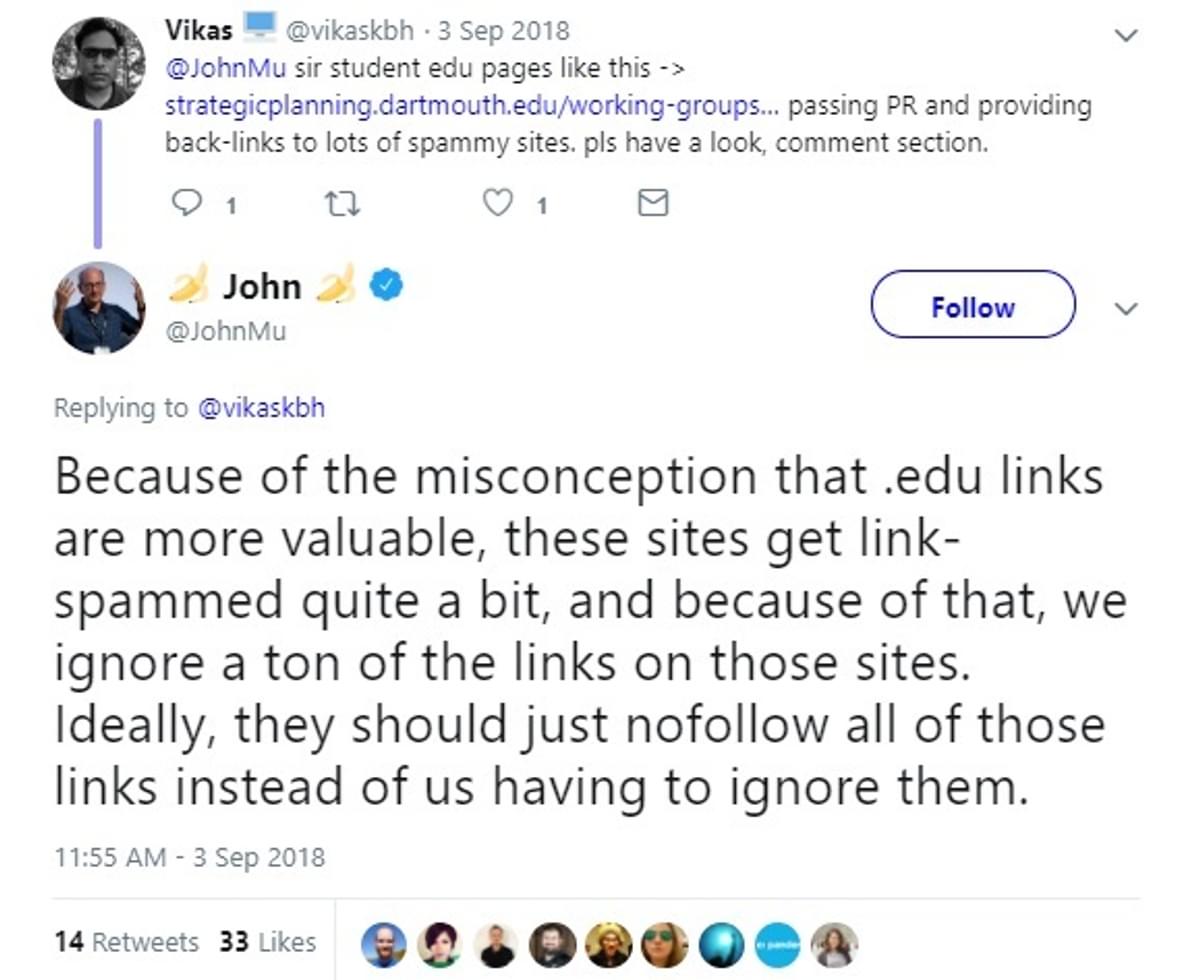
Pro: Long-lasting backlinks
One of the downsides to link building is that, despite spending many hours on building the perfect backlink profile, your links may start to disappear over time, taking with them the traffic you once had.
However, when it comes to scholarship link building, you have a far better chance of having your backlinks remain live for an extended period of time.
This is largely due to scholarship applications being accepted several months ahead of admissions, ensuring your link appears on .edu sites for a reasonable length of time.
Moreover, you’ll likely offer this scholarship at least once per year, meaning you will attract decent traffic regularly.
While it may be quite easy to target smaller institutions like community colleges and faith-specific schools, you really want to get your backlink listed on major college sites.
This will give your scholarship—and your business—credibility and authority. It also makes this exercise worthwhile.
However, because educational institutions have widened up to this form of link building—and because it has been misused in the past—it is significantly more challenging to target reputable universities.
It’s going to take time, patience, and money to get your scholarship link listed on major websites—do you have the luxury of these resources?
How to Create a Scholarship Link Building Campaign
Now that you’ve weighed up the pros and cons involved in scholarship link building as an SEO tactic, you may be wondering how to go about starting a scholarship link building campaign.
Although this is not an exhaustive recipe for success, it should give you an idea of the main steps you need to take to get this strategy right.
Step 1: Start with your scholarship
The first step is to create your scholarship. Choose one that is relevant to your niche. Decide on an amount for your fund, your application and vetting process, and which educational institutions you want to target.
You need to consider how and where students will apply and what they would need to include in their application to be considered for your scholarship or bursary.
Think about specifics like the duration of your campaign and the application deadline.
You’ll also need to consider how you will review scholarship applications so that your process is fair and unbiased.
Step 2: Set up your scholarship web page
Now is the time to develop your scholarship web page. Remember, you want to provide value and serve your local community before extracting value.
To make the best impression, your site should include:
A description of the scholarship, the purpose behind it, and who should apply.
An explanation of how students can apply.
Details about the scholarship itself, its monetary value, and which institutions you will be accepting applications from.
Contact information for your business and the person who is coordinating the scholarship fund.
Any disclaimers or terms and conditions that are important to the scholarship.
Step 3: Outreach

Now that you’ve laid the foundations of your scholarship, it’s time to approach relevant educational institutions and explain the opportunity you’re offering.
You’ll want to research .edu sites, such as major college sites with authoritative domains.
It’s best not to send out hundreds of cold emails. Instead, take time to personalize each email detailing how your scholarship is relevant to their institution and students.
A sustained and targeted email outreach campaign that spans several months is the best way to be successful in your efforts. This is where a well-researched list of university websites will be most beneficial.
Step 4: Estimate your ROI
You should be able to get somewhat of an indication as to what your ROI will be by searching for websites that list scholarships in your area. Use this as an estimate of the number of links you may be able to generate.
You can use specific operators to find other websites on the internet that pertain to scholarships. For example, you could use .edu “scholarships” to tell Google to look for URLs with .edu and the exact match for your keyword.
Here is what your search results would look like:
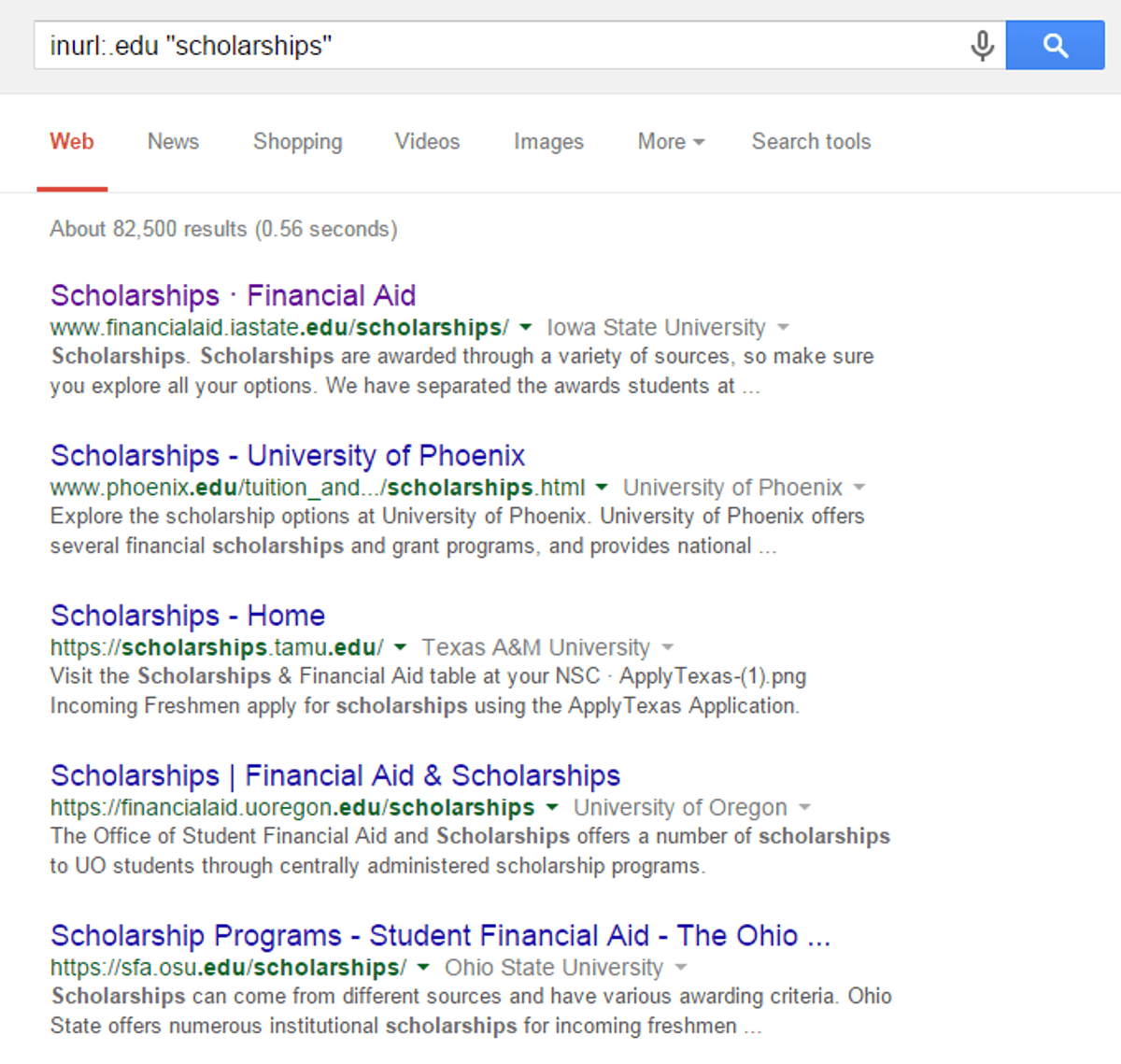
Step 5: Scholarship link success
If all goes well, you will now have various (ideally) very high profile schools, including your scholarship link on your website.
Now you can start monitoring your campaign, reviewing applications, and awarding your scholarship.
Wrapping Up Scholarship Link Building
While many SEO agencies purport that scholarship links are a powerful link building strategy when it comes to boosting search engine rankings, we believe there is enough evidence to argue the opposite.
One thing that is vital to keep in mind is the Google penalty you may face, despite your good intentions, simply by using scholarship links. Is this a risk worth taking?
As a professional and reputable link building agency, we use plenty of strategies and tactics that are far more impactful than scholarship links. We’d love to tell you more about these strategies and how we can help boost your SEO efforts. Visit our website to get in touch.


